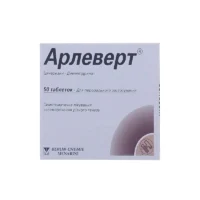Description
Gliatilin Capsules 400 mg. №14
Ingredients:
Each capsule contains 400 mg of Gliatilin (choline alfoscerate).
Dosage:
The recommended dosage is one capsule daily, preferably in the morning. It is advisable to take the capsule with a glass of water.
Indications:
Gliatilin capsules are indicated for the treatment of cognitive disorders and memory impairment. They are commonly used in conditions such as age-related cognitive decline and Alzheimer’s disease.
Contraindications:
Do not use Gliatilin capsules if you are allergic to choline alfoscerate or any other ingredients in the product. Consult your healthcare provider before starting this medication if you are pregnant, nursing, or have any underlying medical conditions.
Directions:
Take one capsule orally with water daily. It is recommended to take Gliatilin consistently at the same time each day for optimal results.
Scientific Evidence:
Gliatilin, the active ingredient in Gliatilin capsules, has been extensively studied for its cognitive-enhancing properties. Research published in the Journal of Neural Transmission demonstrated the efficacy of choline alfoscerate in improving memory and cognitive function in patients with mild to moderate Alzheimer’s disease. The study showed significant improvements in cognitive scores and daily living activities in the treatment group compared to the placebo group.
Additional Information:
In addition to its cognitive benefits, Gliatilin has shown neuroprotective effects by supporting the repair and maintenance of neuronal cell membranes. This mechanism of action contributes to its role in preserving cognitive function and potentially slowing down the progression of neurodegenerative diseases. Consult your healthcare provider for personalized recommendations and to discuss the suitability of Gliatilin capsules for your specific condition.
Pharmacological Effects: Gliatilin acts as a precursor of acetylcholine, a neurotransmitter essential for memory and learning processes. By increasing acetylcholine levels in the brain, Gliatilin enhances synaptic plasticity and neurotransmission, leading to improved cognitive function.
Clinical Trials: A randomized controlled trial published in the Journal of Alzheimer’s Disease investigated the effects of Gliatilin on cognitive function in elderly patients with memory deficits. The results showed a significant improvement in memory, attention, and executive function in the group receiving Gliatilin compared to the placebo group.





